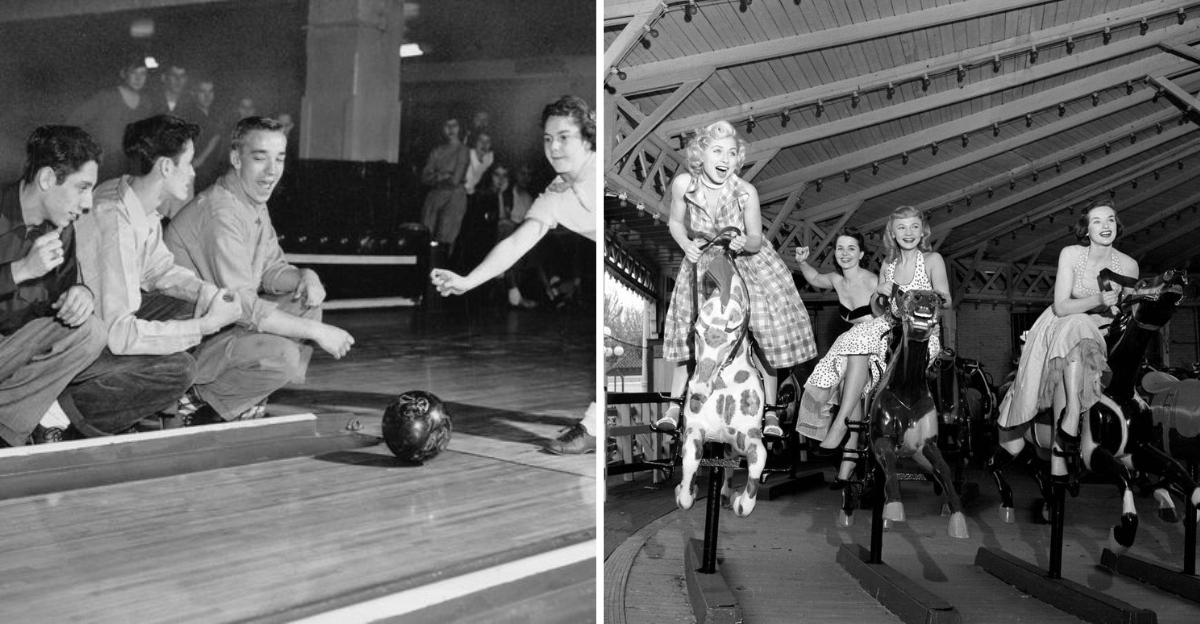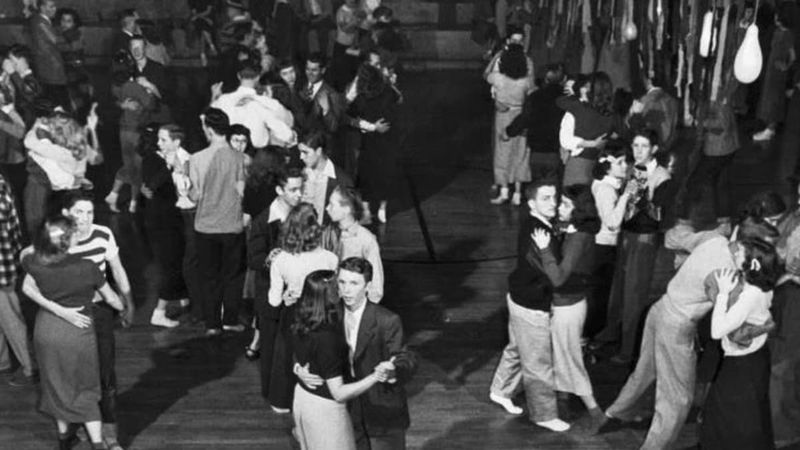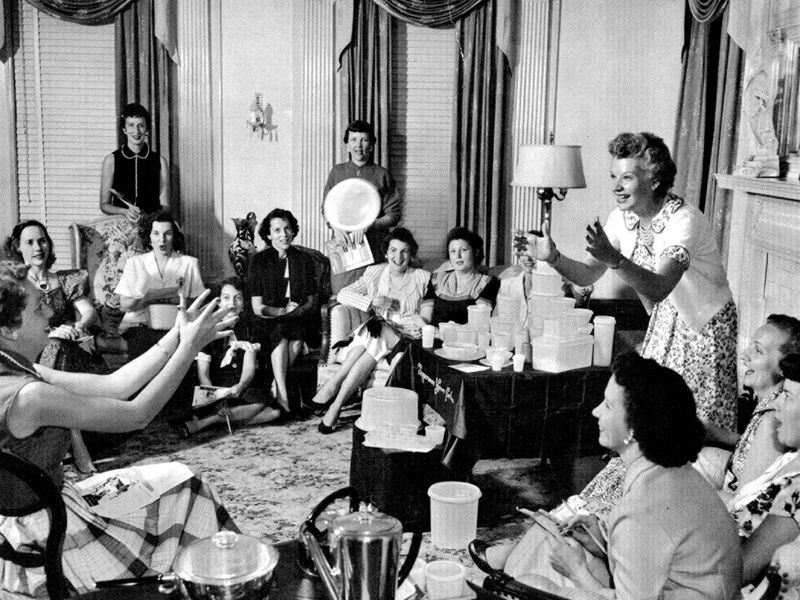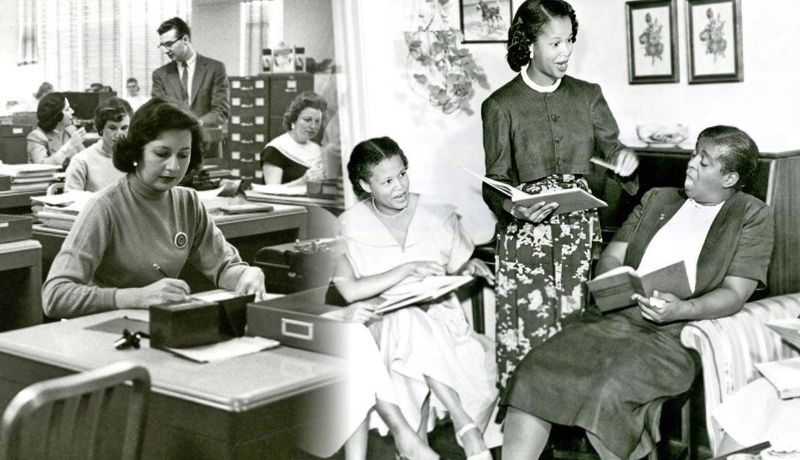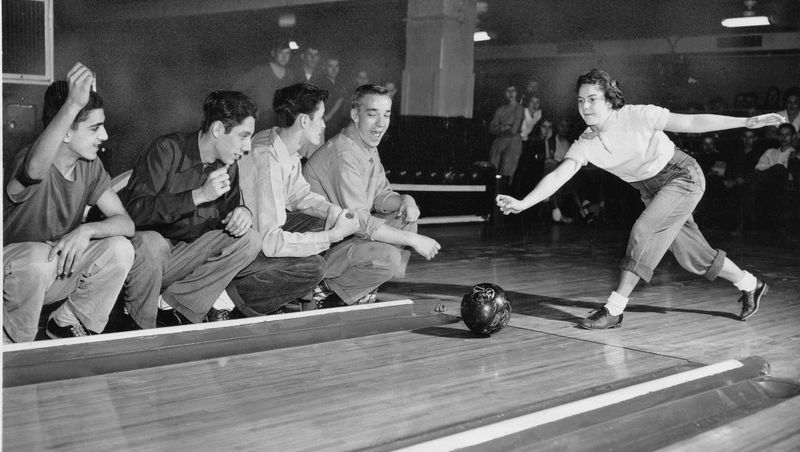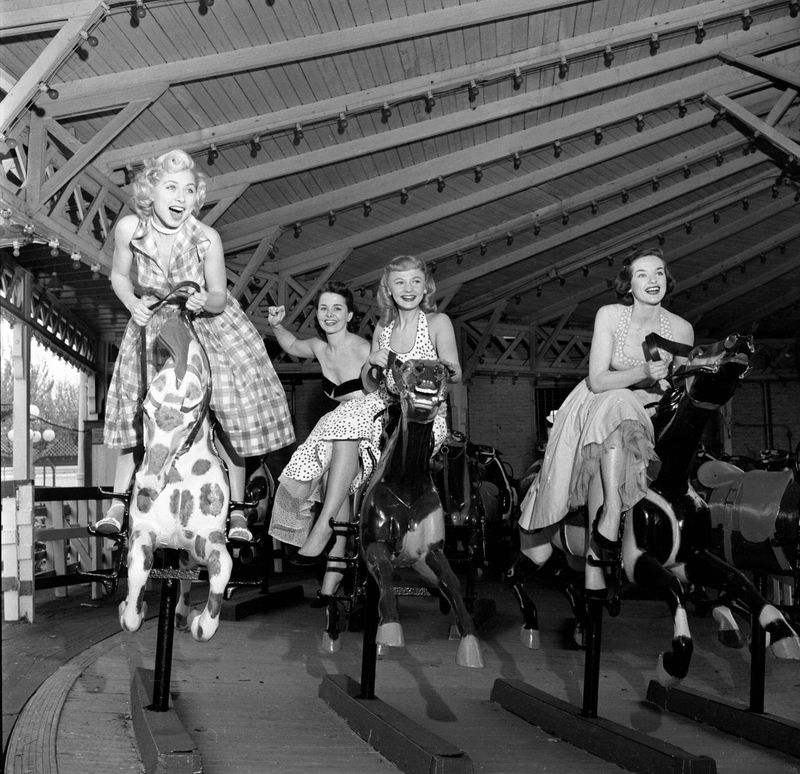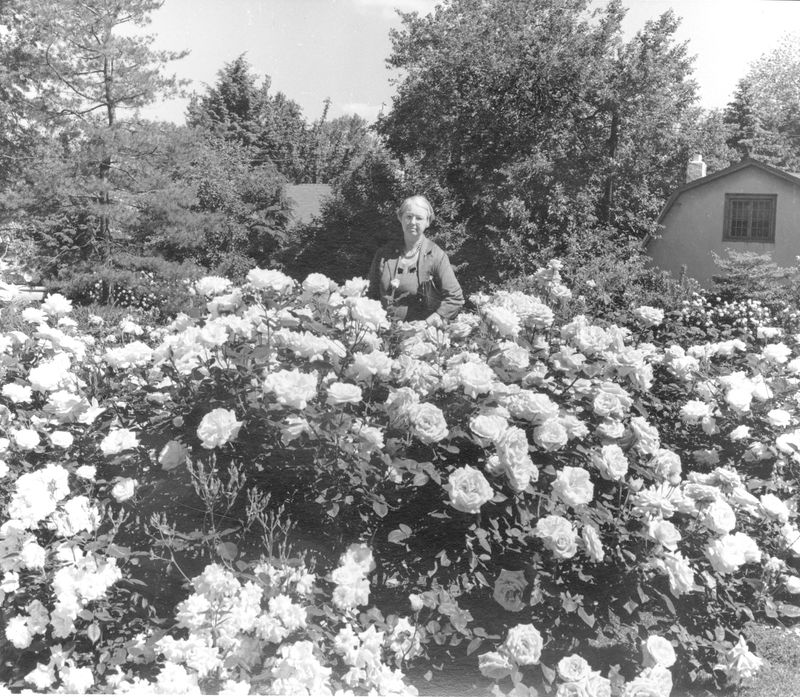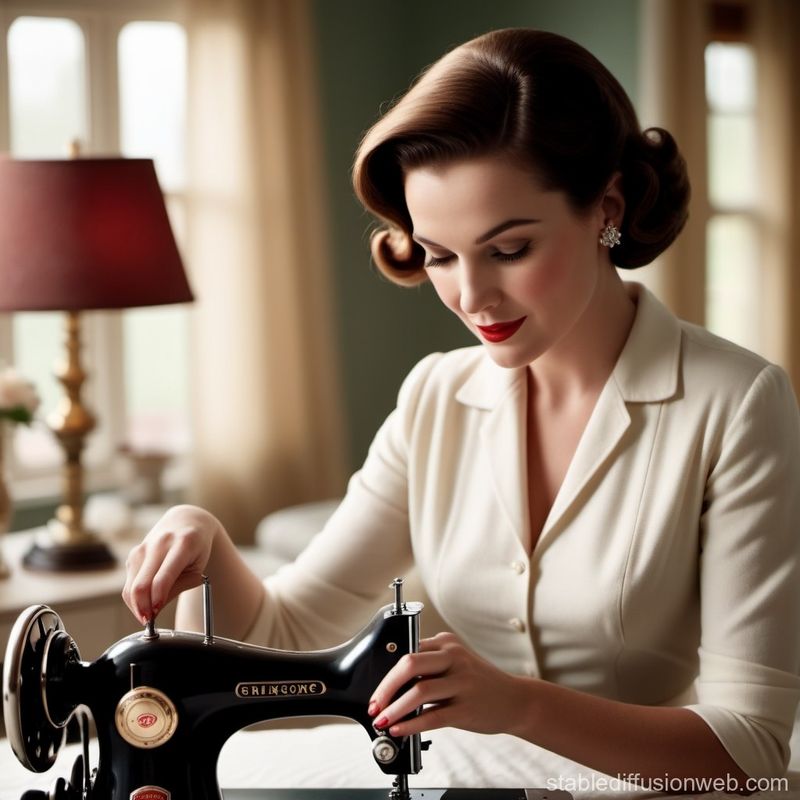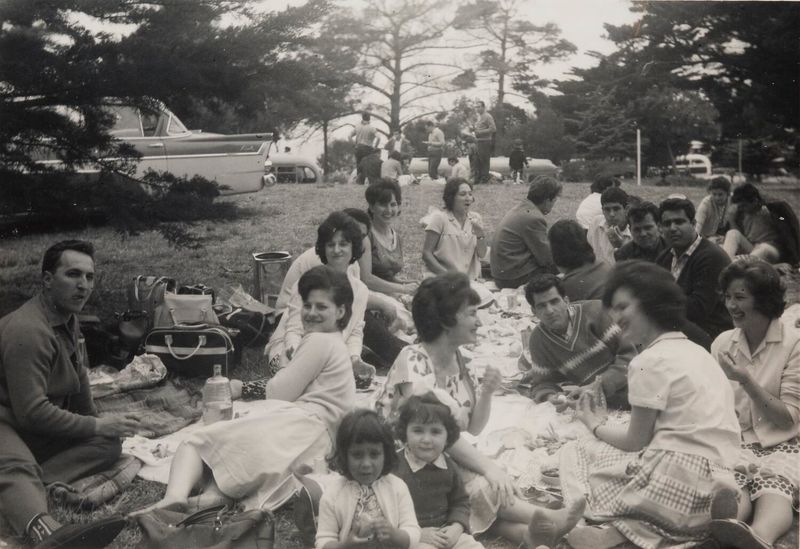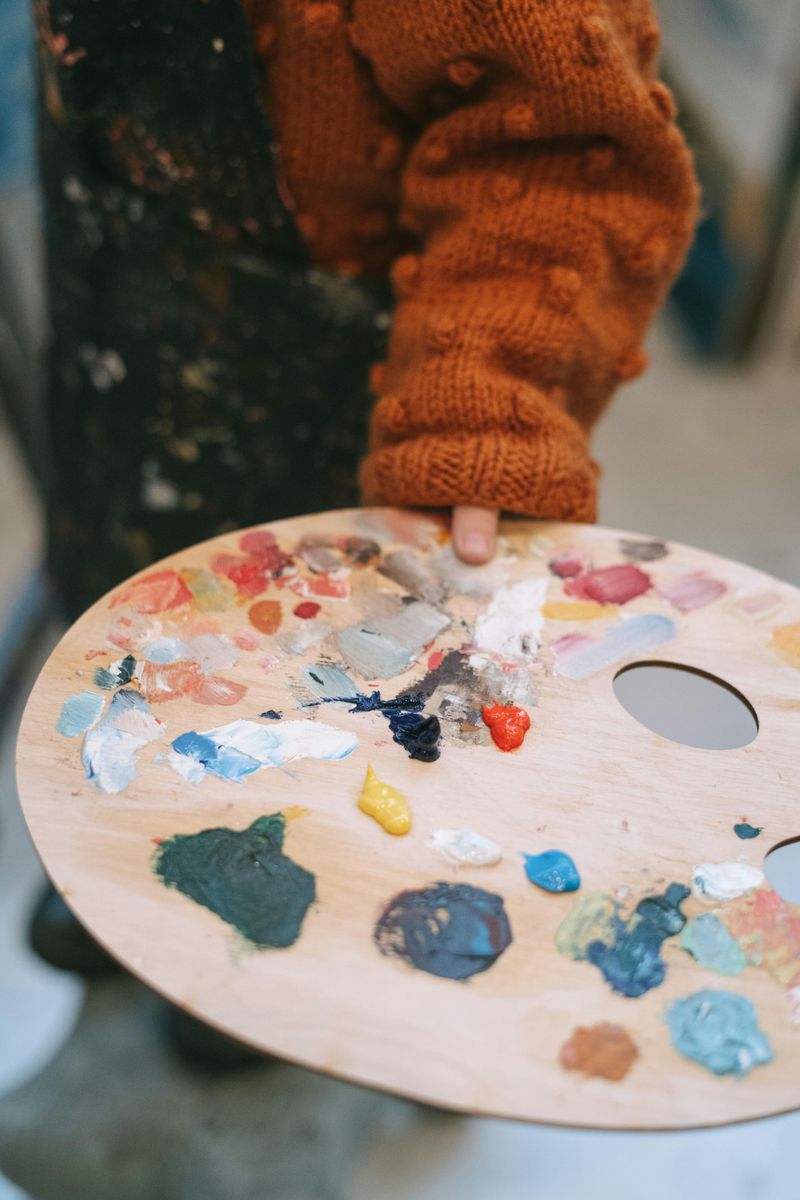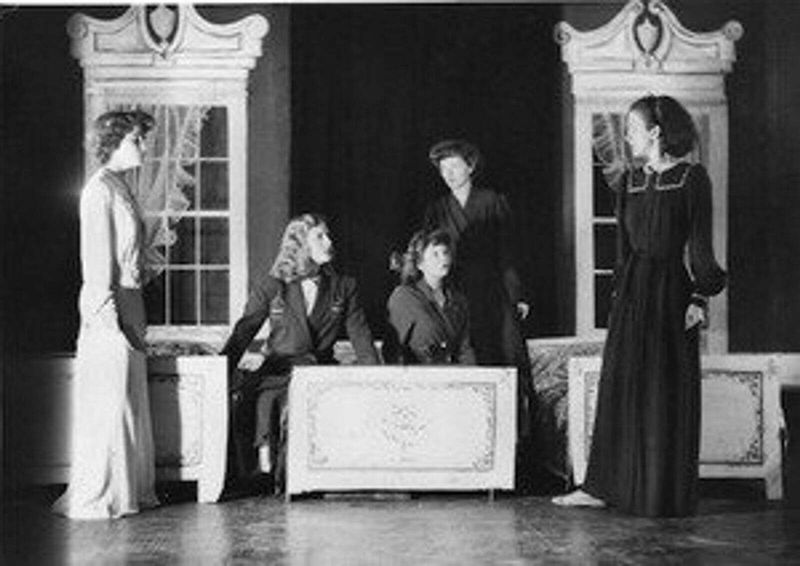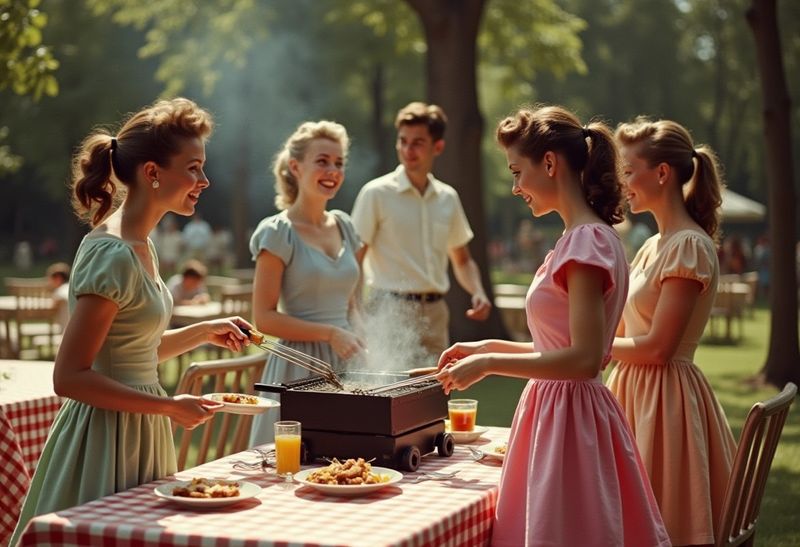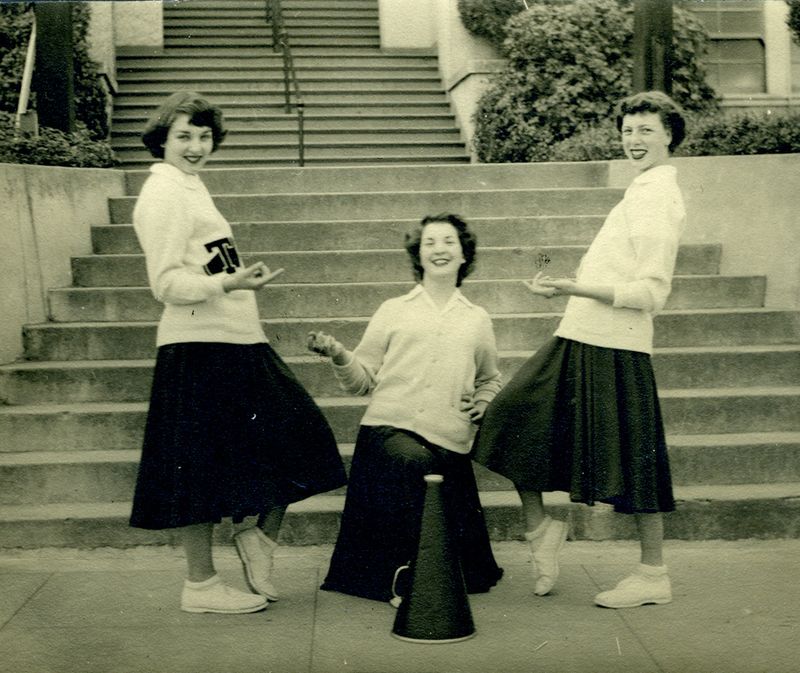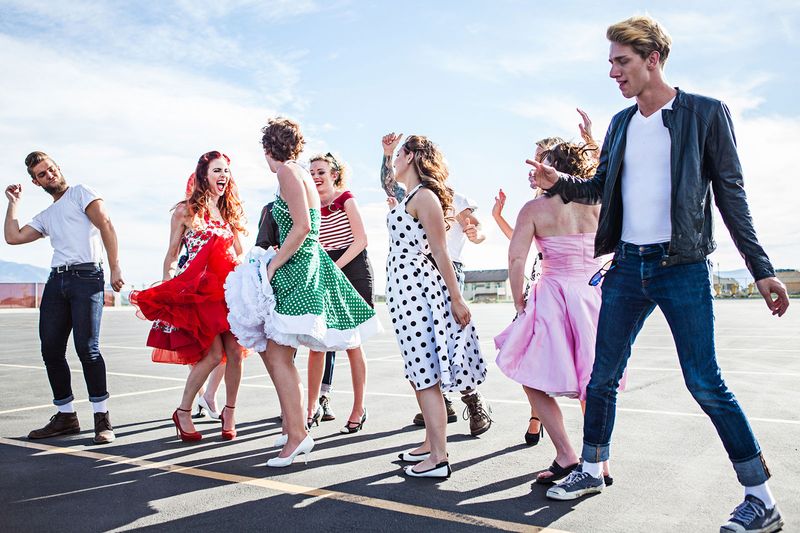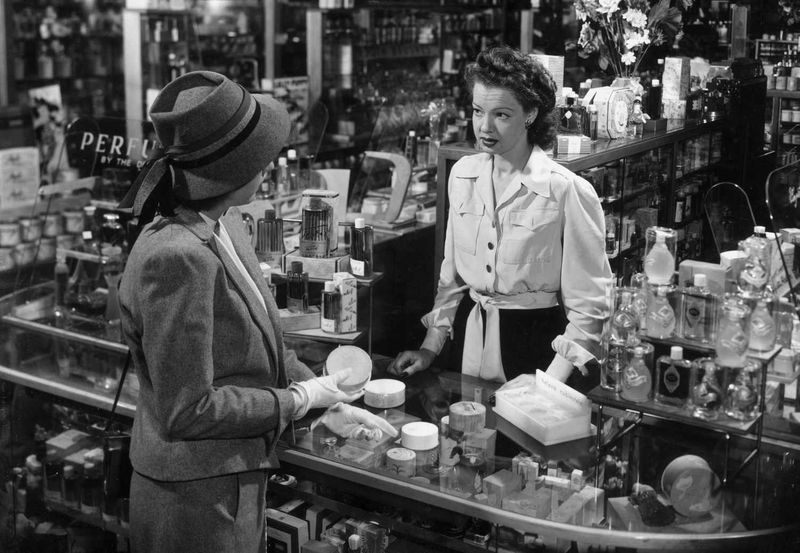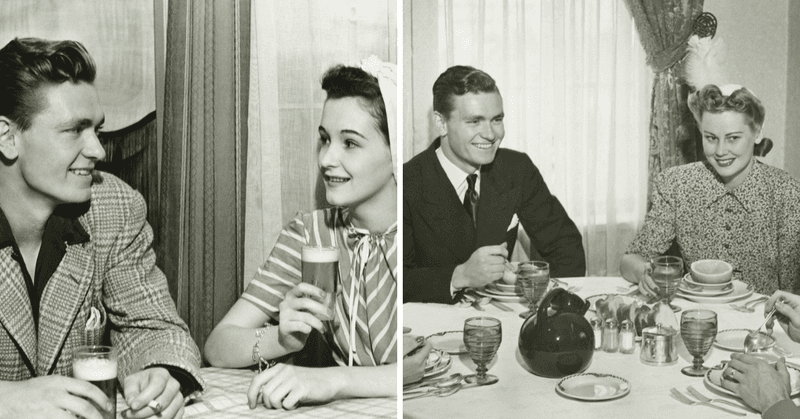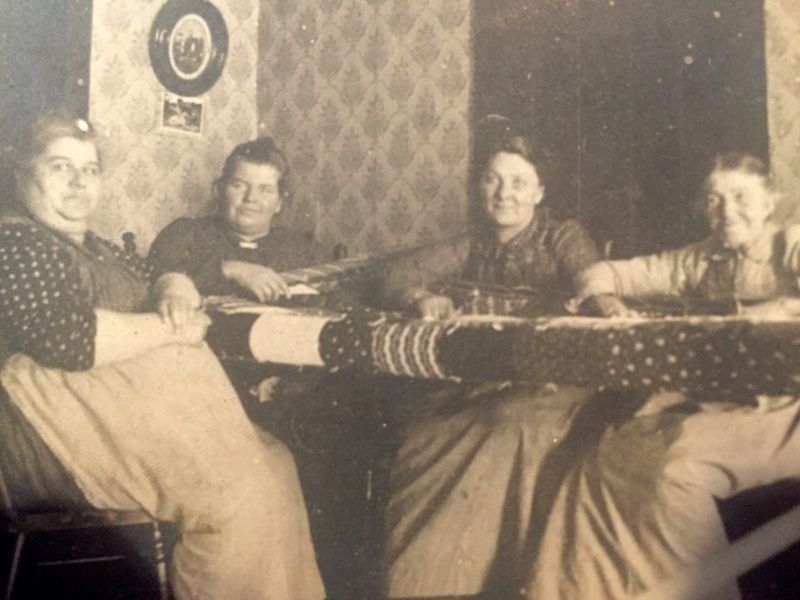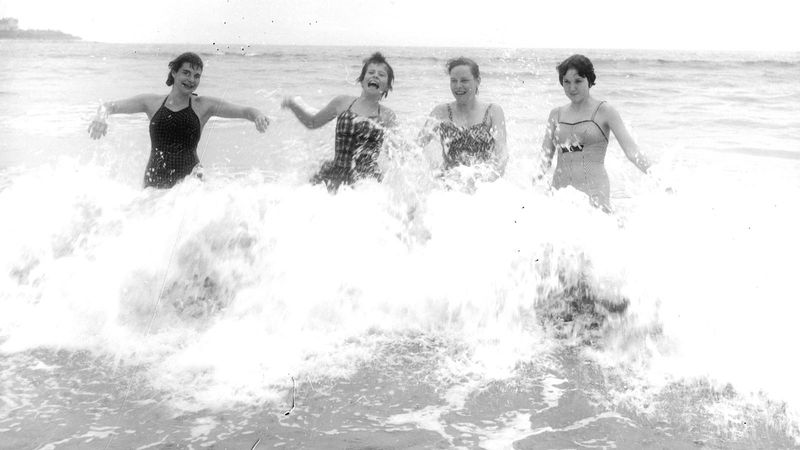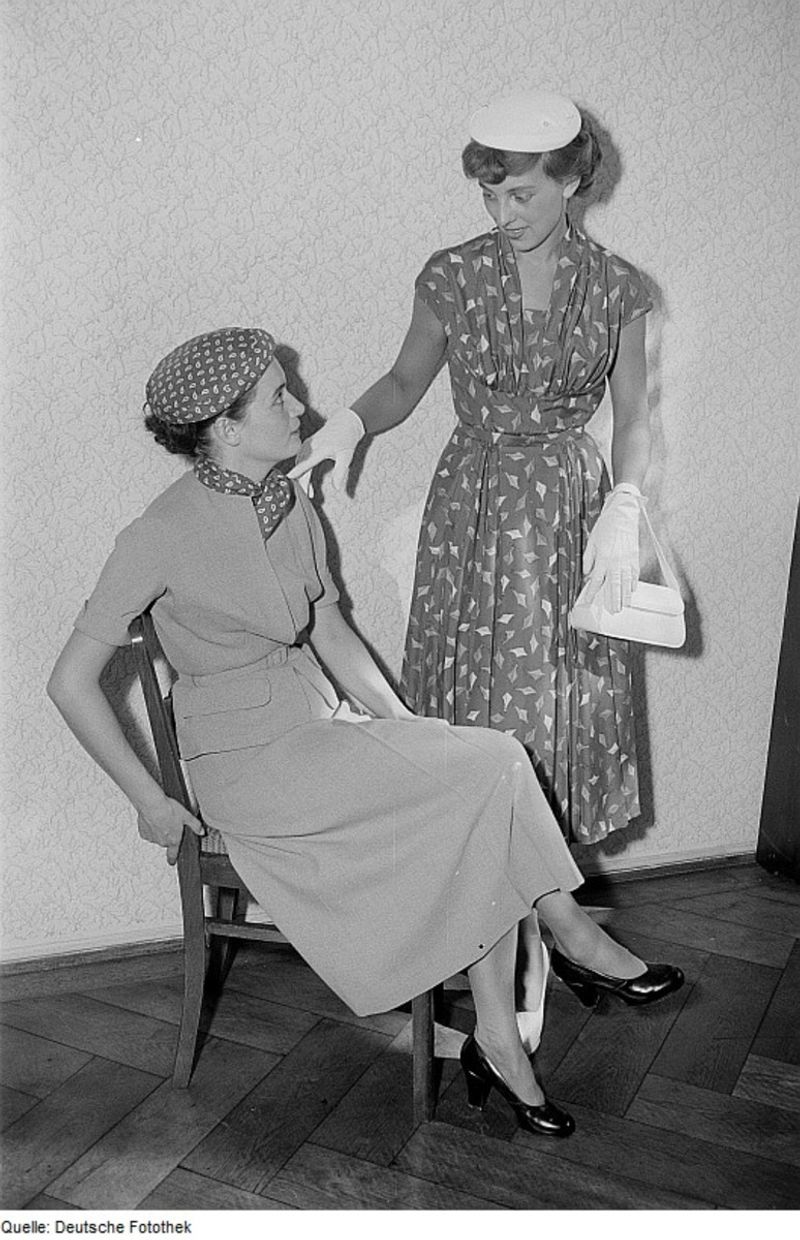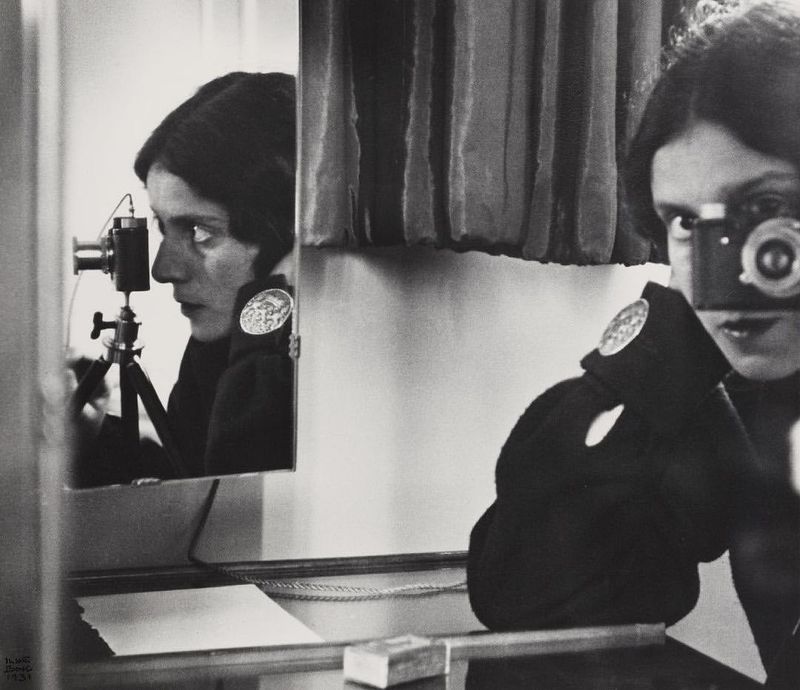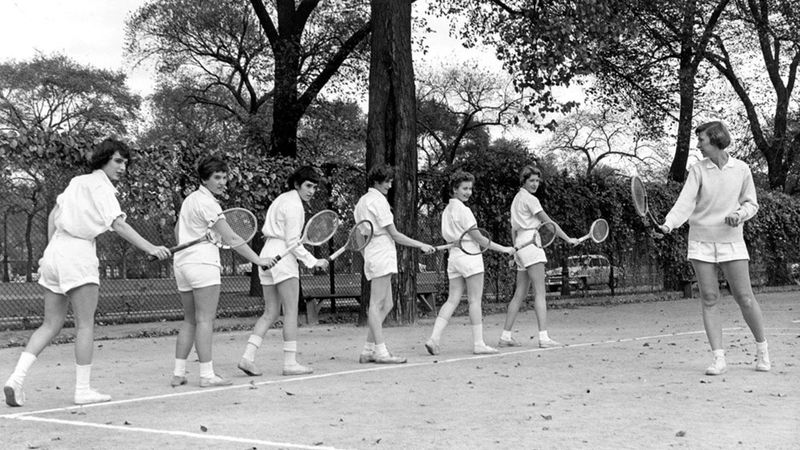The 1950s were a vibrant time for women, filled with various activities and hobbies that defined an era. From leisurely pursuits to social gatherings, women in the 1950s found joy and camaraderie in numerous ways. This blog post explores 20 unique and fascinating activities that women engaged in during this decade, offering a glimpse into the social and cultural fabric of the time.
Sock Hops
Sock hops were lively dance events held in school gymnasiums, where teenagers would dance in their socks to preserve the floors. Young women, donning fashionable poodle skirts and saddle shoes, would gather with friends to enjoy the latest rock and roll hits. These events were often the highlight of the week, offering a casual and fun atmosphere. The energetic dancing, coupled with the booming music from jukeboxes, created a memorable experience for many. Sock hops were more than just dances; they were social gatherings that allowed teenagers to express themselves freely and meet peers.
Tupperware Parties
Tupperware parties became a popular social activity for women in the 1950s, blending business with pleasure. Women would host these gatherings in their homes, inviting friends and neighbors to see demonstrations of the latest Tupperware products. This provided an opportunity for socializing, while also offering a chance to earn extra income by selling Tupperware. Attendees enjoyed refreshments and games, making the events both entertaining and beneficial. Tupperware parties empowered women by giving them a platform to engage in direct sales and develop entrepreneurial skills within a supportive community.
Book Clubs
Book clubs offered women a space to discuss literature and engage with intellectual topics in the 1950s. Gathering in cozy living rooms, members would delve into recent novels or classic literature, sharing their thoughts and interpretations. These clubs fostered friendships and provided an educational outlet beyond traditional roles. The discussions were often lively, with women enjoying a sense of accomplishment as they explored diverse themes and narratives. Beyond just reading, book clubs became a way for women to connect, enhance their critical thinking, and enjoy intellectual stimulation.
Bowling Leagues
Bowling leagues were a popular pastime for women in the 1950s, providing both recreation and social interaction. Women would join local leagues, often forming teams with friends or coworkers. The regular matches offered a fun way to compete and improve their bowling skills. Bowling alleys were lively venues, filled with laughter and camaraderie. This activity allowed women to break away from daily routines and enjoy a sense of community. Participating in leagues also provided an opportunity to meet new people and build lasting friendships, all while keeping active and entertained.
Bridge Clubs
Bridge clubs were a cherished pastime, allowing women to gather and play the strategic card game. These clubs were often hosted in members’ homes, providing a comfortable setting for friendly competition. Women not only honed their skills in bridge but also formed strong social bonds. The game served as a mental exercise, challenging players to strategize and think critically. Beyond the cards, bridge clubs were an opportunity for women to socialize, exchange news, and enjoy each other’s company. This blend of mental challenge and social interaction made bridge clubs a favored activity.
Garden Clubs
Garden clubs blossomed in the 1950s, as women found joy in cultivating plants and sharing horticultural knowledge. Members would meet regularly to exchange tips, discuss plant care, and organize garden tours. These clubs fostered a sense of community, with women bonding over a shared passion for gardening. Engaging in this activity offered relaxation and a creative outlet, allowing women to connect with nature and beautify their surroundings. Garden clubs also provided opportunities for learning, with guest speakers and workshops enhancing members’ gardening skills and knowledge. This nurturing pursuit brought joy and satisfaction.
Sewing Circles
Sewing circles were a common social activity, where women gathered to work on sewing projects. These gatherings allowed women to share skills, patterns, and ideas, while also providing a platform for socializing. Members would create clothing, quilts, and home decor items, enjoying the satisfaction of handmade creations. Sewing circles fostered a sense of community, as women bonded over shared interests and exchanged personal stories. This activity also offered practical benefits, enabling women to craft unique items for their families. The blend of creativity and companionship made sewing circles a beloved pastime.
Picnics in the Park
Picnics were a delightful way for women and their families to enjoy the outdoors during the 1950s. Parks offered a serene setting for relaxation, leisure, and family bonding. Women would prepare elaborate picnic baskets filled with homemade meals, sandwiches, and treats. These outings provided an escape from routine, allowing families to appreciate nature and each other’s company. The simplicity of picnics, combined with the joy of sharing meals outside, created cherished memories. Picnics were more than just meals; they were opportunities for play, laughter, and enjoying life’s simple pleasures together.
Crafting Sessions
Crafting sessions were a creative outlet for women in the 1950s, offering a space to explore various arts and crafts. Women gathered to engage in projects such as knitting, painting, and scrapbooking. These sessions allowed for relaxation and artistic expression, with participants sharing techniques and inspiration. Crafting was more than a hobby; it was a means to create personalized gifts and home decor. The camaraderie and shared creativity made these gatherings enjoyable and fulfilling. Crafting sessions provided a unique blend of leisure and productivity, allowing women to express themselves artistically.
Community Theater
Community theater offered an exciting avenue for women to explore their theatrical talents in the 1950s. Women participated as actors, directors, and stage managers, contributing to vibrant local productions. Rehearsals and performances provided opportunities for creative expression and collaboration. Community theater fostered a sense of belonging, as members worked together to bring stories to life. This immersive experience allowed women to step into different roles and engage with their audiences. Beyond the stage, theater offered a social network, connecting individuals with shared interests and passions. It was a lively and fulfilling pursuit.
Cooking Clubs
Cooking clubs became a popular way for women to explore culinary skills and share recipes in the 1950s. Members gathered in kitchens, experimenting with new dishes and cooking techniques. These clubs catered to women interested in learning about global cuisines and improving their cooking expertise. Beyond culinary exploration, cooking clubs fostered friendships and provided a network of support. Women exchanged tips and shared meals, creating a sense of community around food. The gatherings were both educational and social, offering a delightful way to bond over a mutual love for cooking and dining.
Volunteering
Volunteering was a fulfilling endeavor for women in the 1950s, offering a chance to contribute positively to their communities. Women participated in various activities, from organizing charity events to helping at local shelters. This engagement fostered a sense of purpose and connected women to meaningful causes. Volunteering provided opportunities to meet new people and develop skills, while making a tangible difference. The collaborative efforts and shared goals created a supportive environment, empowering women to impact their communities. Through volunteering, women found satisfaction in helping others and building a better society.
Dance Classes
Dance classes were a popular pastime for women in the 1950s, offering both exercise and entertainment. Women attended classes to learn various styles, from ballroom to jazz, enjoying the rhythm and movement. These sessions provided an opportunity for self-expression, as well as a chance to improve dance skills. Dance classes were more than just lessons; they were social gatherings where women could meet others with similar interests. The joy of dancing, combined with the camaraderie of classmates, made these classes a cherished activity. Women relished the chance to stay active and have fun.
Antique Shopping
Antique shopping offered women a unique way to explore history and find treasures in the 1950s. Women visited antique stores and flea markets, searching for vintage furniture, jewelry, and other collectibles. This activity allowed women to appreciate craftsmanship and connect with the past through objects. Antique shopping was an adventure, with the thrill of discovery and the joy of finding hidden gems. Women often shared their finds and stories, creating a community of enthusiasts. This pastime combined curiosity with nostalgia, offering both excitement and a deeper appreciation for historical artifacts.
Hosting Dinner Parties
Dinner parties were a sophisticated social activity for women in the 1950s, providing an opportunity to entertain guests and showcase culinary skills. Women would meticulously plan menus and set elegant tables, creating a warm and inviting atmosphere. These gatherings allowed women to express creativity in cooking and presentation, impressing friends and family. Dinner parties were more than meals; they were events where meaningful conversations and connections flourished. Women enjoyed the art of hosting, relishing the chance to create memorable experiences for their guests. This tradition fostered hospitality and celebrated the joy of coming together.
Quilting Bees
Quilting bees brought women together to collaborate on quilting projects, combining creativity with community. These gatherings were held in homes or community centers, where women worked collectively on intricate designs. Quilting was an art form and a practical skill, resulting in beautiful, functional creations. The process of quilting involved planning, stitching, and sharing stories, making it a rich social experience. Quilting bees fostered a sense of unity, as women supported one another and shared skills. This activity preserved traditions and allowed women to express themselves through textile art, all while enjoying companionship.
Beach Outings
Beach outings were a refreshing escape for women in the 1950s, offering sun, sand, and relaxation. Women visited local beaches with friends and family, enjoying swimming and sunbathing. These trips provided a break from daily routines, allowing women to unwind in a natural setting. Beach outings were about more than just leisure; they were opportunities for socializing and enjoying outdoor activities. Women embraced the freedom of the beach, creating happy memories by the sea. The combination of fresh air, laughter, and the sound of waves made beach outings a beloved pastime.
Church Socials
Church socials were significant community events for women in the 1950s, providing a venue for social interaction and fellowship. These gatherings were often centered around meals, games, and entertainment. Women enjoyed the chance to connect with their church community, sharing in faith and friendship. Church socials fostered a sense of belonging and offered support networks for attendees. Women engaged in organizing and participating in these events, contributing to a vibrant community life. The warmth and hospitality of church socials made them cherished occasions, where meaningful relationships were nurtured and celebrated.
Photography Clubs
Photography clubs offered women a creative outlet to explore the art of photography in the 1950s. Members gathered to learn about camera techniques, composition, and photo development. Photography clubs provided an opportunity for self-expression and capturing life’s moments. Women enjoyed documenting their surroundings, creating lasting memories through their lenses. These clubs fostered learning and collaboration, with members sharing tips and critiques. Photography became a passion, allowing women to develop artistic skills and see the world from new perspectives. The joy of capturing images and telling stories through photography made these clubs a fulfilling pursuit.
Tennis Matches
Tennis matches were a lively and competitive pastime for women in the 1950s, combining sport with social interaction. Women participated in local tennis clubs or played casually with friends, enjoying the physical activity and challenge. Tennis offered a way to stay fit and build athletic skills while having fun. The courts became social hubs, where women gathered to play, watch matches, and socialize. Tennis was more than just a game; it was a lifestyle that encouraged health and connection. Women relished the thrill of the game and the camaraderie it fostered on and off the court.
